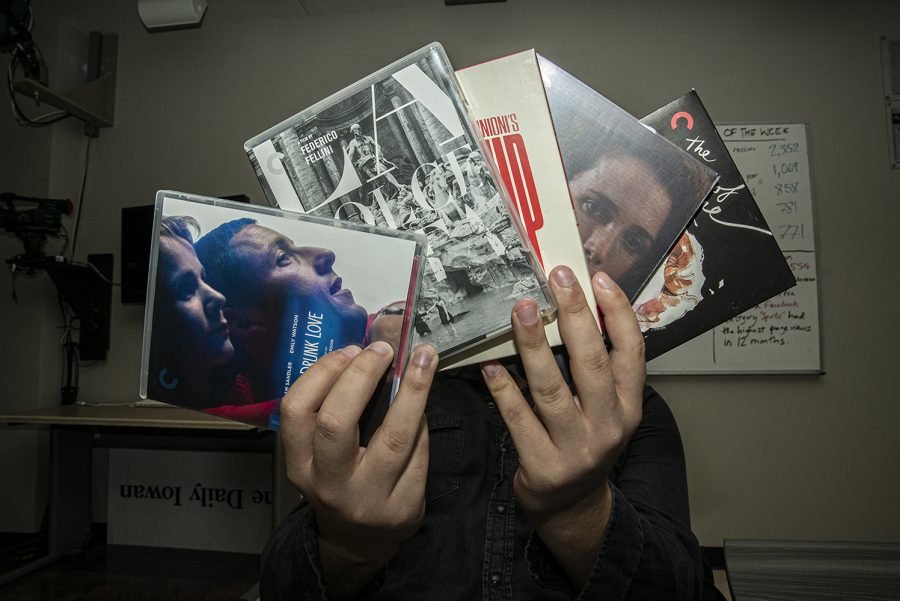Physical media lives: The Criterion Collection shows steadfast demand for physical films
For an industry that is considered to be in decline, The Criterion Collection creates the debate for why film lovers continue to purchase DVDs and Blu-Rays.
Photo illustration by Tate Hildyard for The Daily Iowan.
February 27, 2020
Just as readers buy physical paperbacks over e-books and music lovers purchase vinyl rather than depending on their Spotify account, many film lovers buy from a tiny collection of films called the Criterion Collection.
In an era where anyone can watch their favorite movies and TV shows on their phone, the demand for physical films has been on the decline. Between 2014 and 2018, the demand for digital media has increased by 170 percent, and the demand for physical media declined by almost 50 percent, according to a 2018 Theme Report by The Motion Picture Association.
But some film buffs, myself included, require the sensation of spending more than they should on films they can easily purchase on iTunes.
The Criterion Collection is a company that originated in 1984 and publishes classic and contemporary films from all over the world, presenting them in the highest quality. But why is Criterion so appealing? Why are cinephiles excited by this plastic and paper? Because it’s a love-letter; art paraded in more art, bringing artists and essayists to layer the film with cinematic pleasures.
Blu-Rays still exist, but they aren’t made with the passion and care that Criterion provides for films. A Netflix stream doesn’t show a shimmer of affection for a film that Criterion does.
One of the highlights of a Criterion edition is that they release films with a physical copy. Every Wes Anderson film gets a regular physical release from its studio, but the Criterion edition surpasses it by containing cover art representing the director’s quirky aesthetic.
Yes, cover art is significant, and Criterion’s mission to get a vast array of artists to create unique artwork for most of its releases shows the company’s dedication to present their films in an exuberant manner.
RELATED: You don’t need to be a cinema major to truly appreciate film
Then there are the supplements. Criterion films contain booklets with essays written by film scholars and critics. These are pivotal to experiencing a film. If you watch Frances Ha on Netflix, you don’t get an amazing featurette where director Noah Baumbach and other tint aficionado Peter Bogdonavich discuss the decision to make a film shot on digital black and white. This tiny interview between two filmmakers is a necessity for any cinephile.
Criterion has also sought out methods of restoring films. It’s a creative venture that has the company seeking to present old films in the best manner possible (here is a documentary where the process is shown.) Streaming services may offer films in 4K, but it’s rarely known how much care the films were given when given a transfer, while Criterion’s main effort is to present films in their highest quality.
With the news that Netflix just made an exciting deal with the distributor to give physical releases of their 2019 films such as The Irishman and Marriage Story, it is clear that Criterion is still in demand.
Priced at around $30 to $40 for a single release, film lovers such as I will spend that amount or greater to own a copy of a film from the company even if streaming it would cost less, because price isn’t the issue — passion is the driver.
A Criterion release is something for film lovers get excited for, even in an era when there isn’t any need to spend money on physical releases. With the company holding two flash sales annually, including one this past Tuesday (I bought copies of Cold War and Roma), buying from the collection is enticing because of its rarity.
It’s a company dedicated to making each of its releases a celebration of the medium by uniting artists, film scholars, and visual technicians to offer films in their most prestigious state. These are releases made with care and effort, something that is unable to be cherished by pressing the “Play” button, but instead by holding it on a shelf.



